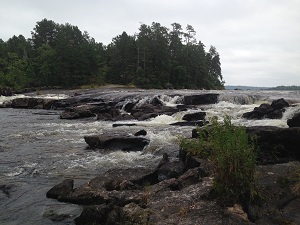A couple years ago, when I went deep into the world of Ironman, I learned a new term: DNF or Did Not Finish.
This year, 2021, I’ve declared as April’s year of the DNF. And I think this blog, including posting three times a week in Q1, is my first DNF – hooray!
But let me back up a bit first. For those of you not familiar with the sport of triathlon and Ironman races, a triathlon is a race consisting of a swim, bike and run all together in one race. A race is typically completed by a single athlete who successfully races in all three sports, in that order. However, triathlons can also be done as a relay; I’ve become rather fond of the relay option in the recent past.
Triathlon races come in a variety of different distances. An Ironman race distance triathlon consists of a 2.4 mile swim, a 112 mile bike and a marathon. For those of you who are agog just reading that last sentence, there are also half-Ironman races consisting of half those distances: a 1.2 mile swim, 56 mile bike and half marathon. And if that still sounds like a lot (and it is!), there are also international and sprint distance races consisting of a 0.9 mile or half mile swim, 25 mile or 10-15 mile bike and 10K or 5K run, respectively.
An Ironman or Half Ironman race, as you can imagine, is not for the faint of heart. Committing to a race is a serious commitment to training, planning, discipline and saying no not only to things you don’t want to do but also to things you DO want to do in pursuit of the Ironman finish. It often means that the athlete set a stretch goal, one that she wasn’t sure she could successfully complete. She also put significant effort and resources into training for that audacious goal. Because of the kind of commitment that these races require, some Ironman athletes have one or even many DNFs before they successfully complete a race. And the athlete who signs up for a race, trains, shows up on race day to start the race but doesn’t finish the race, thus earning a DNF, is viewed with a deep respect in the triathlon community. Often, the more DNFs an athlete has before she successfully completes her first race, the more the triathlon community celebrates with her when she earns her first finishers medal!
In my family growing up, setting a goal that you weren’t sure you could accomplish opened the door to being labeled a failure and deep shame, the kind of shame that made crawling into a dark hole seem like a better option. So I learned to play small, to set goals small enough that I was nearly 100% sure I could accomplish. And after years of doing that, life gets smaller and smaller; the gifts you are meant to bring to the world sit idle and unused.
For me, one of the gifts of triathlon, and especially my beloved Team Butterscotch, is a safe space not just to dream big, dream audacious, but also to name and declare those audacious goals to others. Your teammates will hold you accountable to your goals. Much more importantly, those teammates will be there to cheer you on, no matter what happens on “race day,” and celebrate your effort and audacious goal.
So, declaring 2021 as the year of the DNF for me means that I step up to the plate to name audacious goals in areas of my life outside of the triathlon. Maybe I’ll make it to most of my 2021 audacious goals… and maybe I won’t make it to some of those goals, like the goal of posting to this blog three times a week for Q1. No matter what happens with my 2021 audacious goals, I will celebrate big goals, showing up with my full self and putting my heart and soul into the efforts to achieve those audacious goals.
May your lives in 2021 also include both audacious goals and DNFs. If you feel inspired, I would love to hear, and hold with reverence, one of your audacious goals for 2021; email me!

Camille
February 18, 2021 at 5:50 amLove the article April. This was inspiring and informative. My biggest DNF is Half Dome at Yosemite. I was very close to the top, but weather prevented me from finishing the last section of the chains. Hopefully I get to finish my next trip to Yosemite.